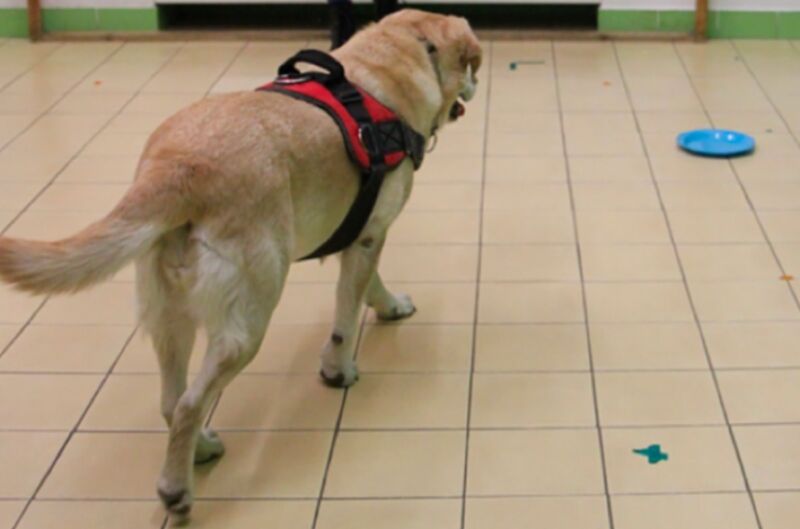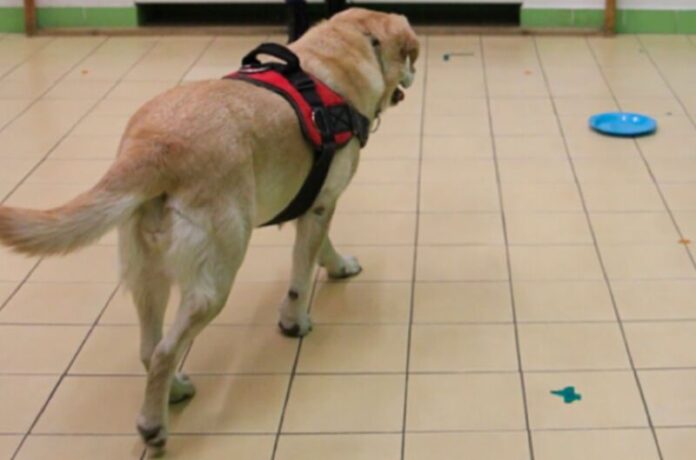
Enlarge / Look at this very good boy taking a test to determine the origin of his spatial bias for a study on how dogs think. (credit: Eniko Kubinyi)
Research has shown that if you point at an object, a dog will interpret the gesture as a directional cue, unlike a human toddler, who will more likely focus on the object itself. It's called spatial bias, and a recent paper published in the journal Ethology offers potential explanations for why dogs interpret the gesture the way that they do. According to researchers at Eötvös Loránd University in Hungary, the phenomenon arises from a combination of how dogs see (visual acuity) and how they think, with "smarter" dog breeds prioritizing an object's appearance as much as its location. This suggests the smarter dogs' information processing is more similar to humans.
The authors wanted to investigate whether spatial bias in dogs is sensory or cognitive, or a combination of the two. "Very early on, children interpret the gesture as pointing to the object, while dogs take the pointing as a directional cue," said co-author Ivaylo Iotchev. "In other words, regardless of the intention of the person giving the cue, the meaning for children and dogs is different. This phenomenon has previously been observed in dogs using a variety of behavioral tests, ranging from simple associative learning to imitation, but it had never been studied per se."
Their experimental sample consisted of dogs used in a previous 2018 study plus dogs participating specifically in the new study, for a total of 82 dogs. The dominant breeds were border collies (19), vizslas (17), and whippets (6). Each animal was brought into a small empty room with their owner and one of the experimenters present. The experimenter stood 3 meters away from the dog and owner. There was a training period using different plastic plates to teach the dogs to associate either the presence or absence of an object, or its spatial location, with the presence or absence of food. Then they tested the dogs on a series of tasks.
Read 6 remaining paragraphs | Comments
Ars Technica - All contentContinue reading/original-link]




